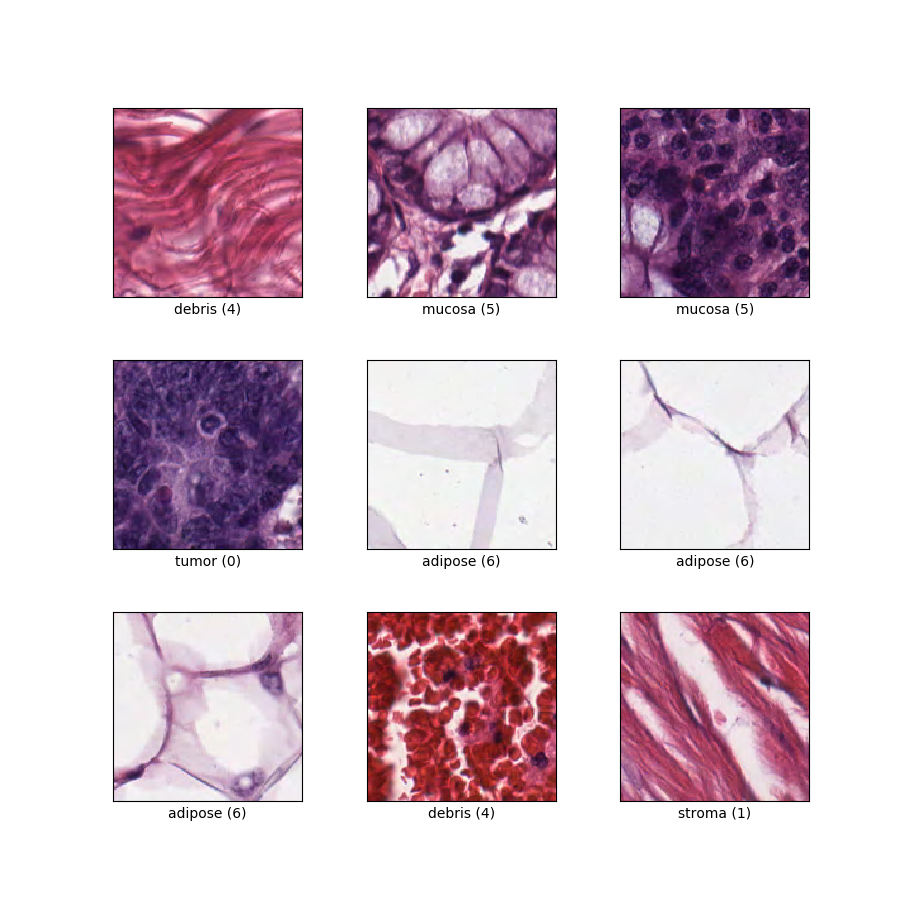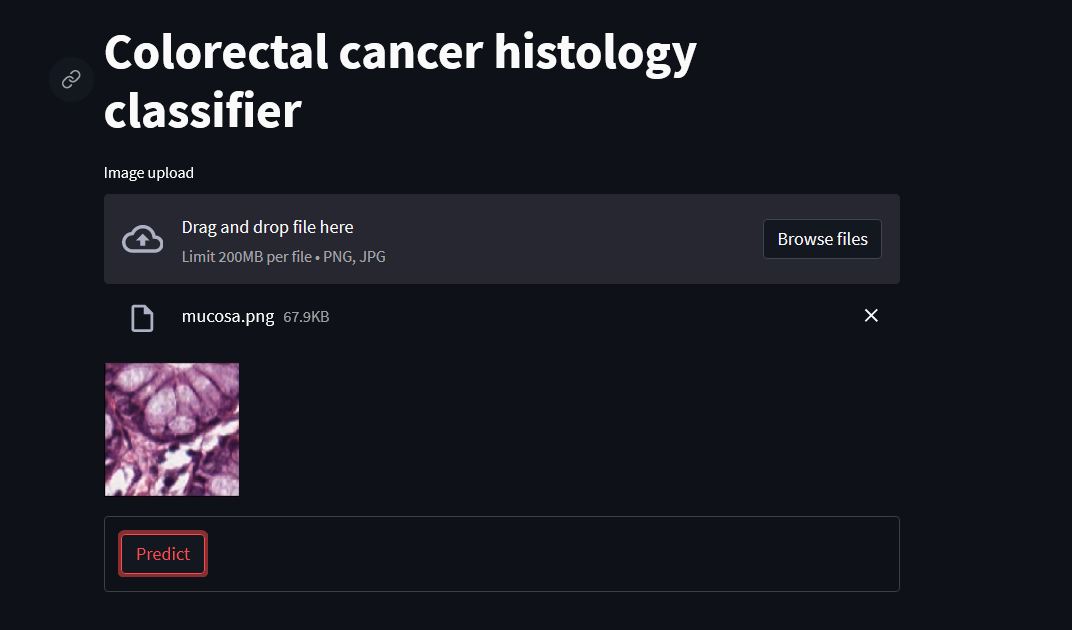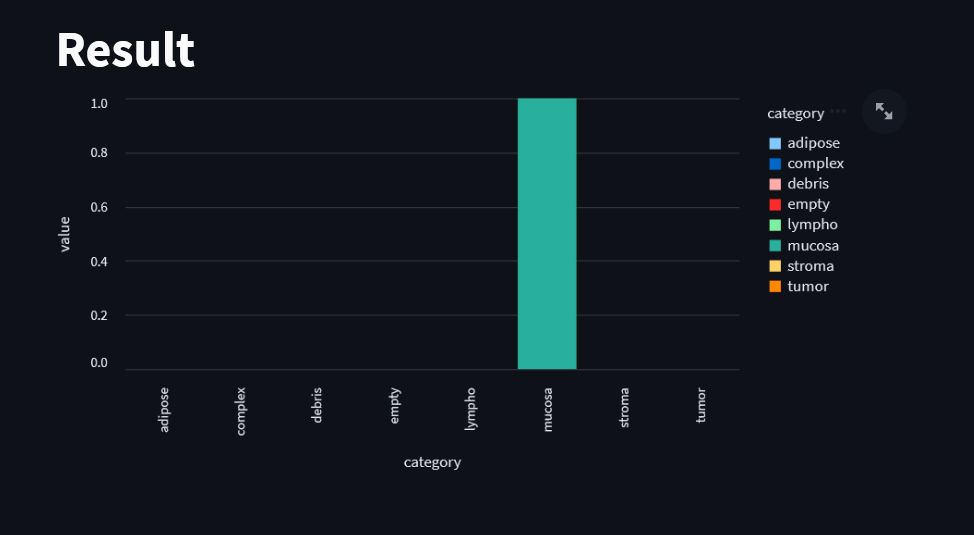colorectal_histology
Table of Contents
About The Project
Content
This data set represents a collection of textures in histological images of human colorectal cancer. It contains two files:
"Kather_texture_2016_image_tiles_5000.zip": a zipped folder containing 5000 histological images of 150 * 150 px each (74 * 74 µm). Each image belongs to exactly one of eight tissue categories (specified by the folder name). "Kather_texture_2016_larger_images_10.zip": a zipped folder containing 10 larger histological images of 5000 x 5000 px each. These images contain more than one tissue type.
Image format
All images are RGB, 0.495 µm per pixel, digitized with an Aperio ScanScope (Aperio/Leica biosystems), magnification 20x. Histological samples are fully anonymized images of formalin-fixed paraffin-embedded human colorectal adenocarcinomas (primary tumors) from our pathology archive (Institute of Pathology, University Medical Center Mannheim, Heidelberg University, Mannheim, Germany).
Ethics statement
All experiments were approved by the institutional ethics board (medical ethics board II, University Medical Center Mannheim, Heidelberg University, Germany; approval 2015-868R-MA). The institutional ethics board waived the need for informed consent for this retrospective analysis of anonymized samples. All experiments were carried out in accordance with the approved guidelines and with the Declaration of Helsinki.
More information / data usage
For more information, please refer to the following article. Please cite this article when using the data set.
Kather JN, Weis CA, Bianconi F, Melchers SM, Schad LR, Gaiser T, Marx A, Zollner F: Multi-class texture analysis in colorectal cancer histology (2016), Scientific Reports (in press)
Built With
Installation
- Clone the repo and extract zip file
git clone https://github.com/FreckledMe/colorectal_histology.git
- Open a terminal via this extracted folder location
pip install virtualenv
- Create environment for project
python<version> -m venv <virtual-environment-name>
- Activate environment
environment_path\<virtual-environment-name>\Scripts\activate
- Install required libraries
(virtual-environment-name) pip install -r requirements.txt
- Run colorectal_histology.ipynb
Usage
Use Streamlit
(virtual-environment-name)/streamlit run stream.pyExample result
View loss and accuracy in per epoch via Tensorboard
(virtual-environment-name)/tensorboard --logdir logsExample result










